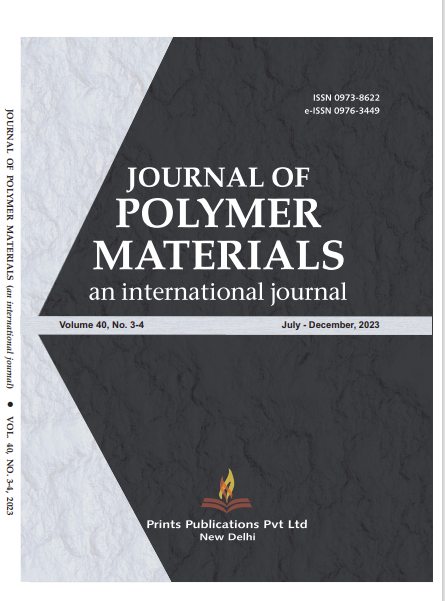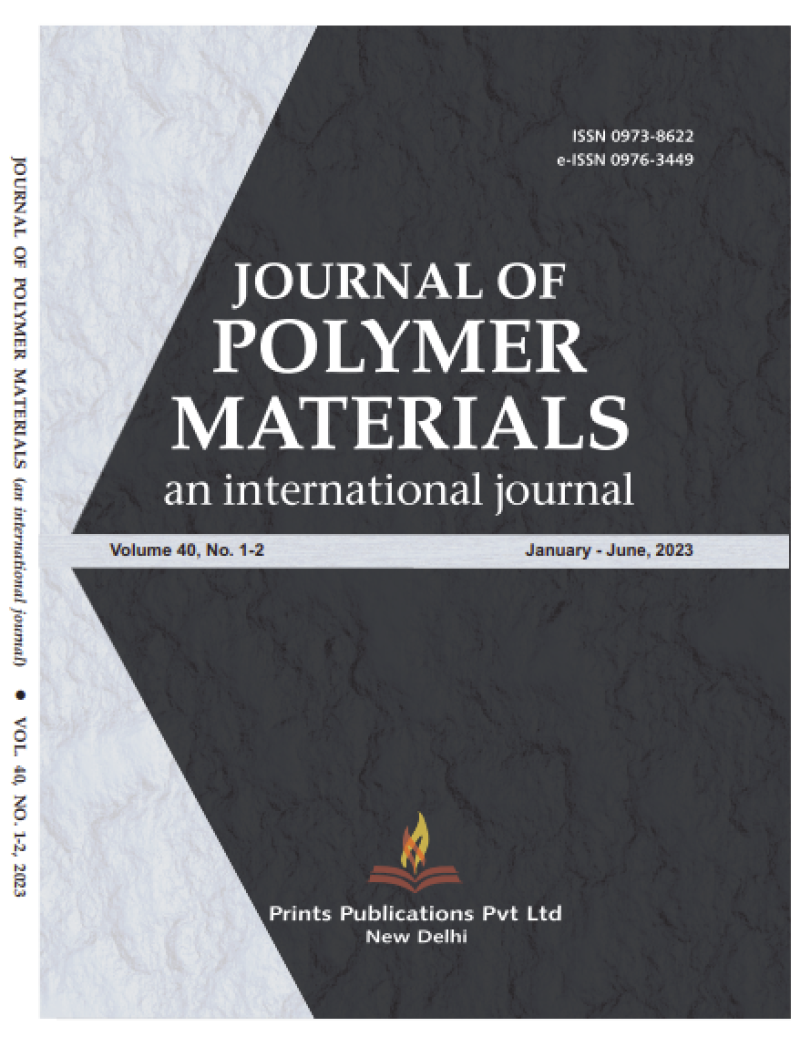Journal of Polymer Materials : An International Journal
Current Volume: 40 (2023 )
ISSN: 0973-8622
e-ISSN: 0976-3449
Periodicity: Quarterly
Month(s) of Publication: March, June, September & December
Subject: Chemistry
DOI: 10.32381/JPM
Acrylic Finished Leather Upgraded with Thermoplastic Polyurethane Filament using 3D Printing – A New Generation Hybrid Leather of Synthetic and Natural Polymer
By : Sivaraj Sudhahar, Umamaheswari G, Jaya Prakash Alla, Raghava Rao Jonnalagadda, Suguna Lakshmi, Sanjeev Gupta
Page No: 33-45
Abstract
Leather manufacturing process involves a lot of waste disposal which pollutes environment, some of the processes are inevitable. In the present investigation, 3D printing technology was used to reduce the wastage and to cover defective regions in leather. The present study focuses on synthesis of acrylic binder using emulsion polymerization technique. These binders were analysed for solid content for better optimisation of the amount of binder to be utilised for finishing operation. The experimental binder was prepared with 26% solids. Particle size and thermogravimetric analyses were carried out to understand the size and shape of the particles and their thermal resistance. These binders were used for leather finishing and the performance of leather was studied. Surface morphology changes of leathers were studied using Scanning Electron Microscopy (SEM). Wet and dry rub fastness, finish film adhesion, light fastness and organoleptic properties were studied and found to be superior compared with control leathers. The acrylic finished leather with minor defects was taken for 3D printing and designed using Thermoplastic Polyurethane (TPU) as filament. The acrylic finished leather shows good adhesion for TPU and it results in numerous designs in short duration. The new additive was added to leather using 3D printing technology to produce a tailor-made valuable design without any waste disposal and chemical discharge. This invention may convert the rejected waste leather into valuable material and lead to the new generation hybrid leather for use.
Authors :
Sivaraj Sudhahar
Department of Leather Technology, Anna University, Chennai
Umamaheswari G
Department of Chemistry, College of Engineering Guindy Campus, Anna University, Chennai.
Jaya Prakash Alla
CLRI-Regional Centre Kanpur
Raghava Rao Jonnalagadda
Inorganic & Physical Chemistry Laboratory
Suguna Lakshmi
Polymer Science & Technology
Sanjeev Gupta
Centre for Human & Organisational Resources Development. CSIR-Central Leather Research Institute, Adyar, Chennai.
DOI: https://doi.org/10.32381/JPM.2023.40.1-2.3



